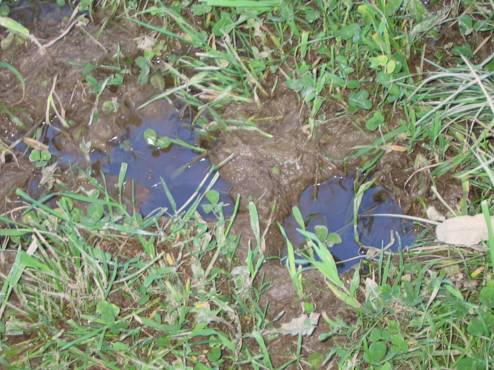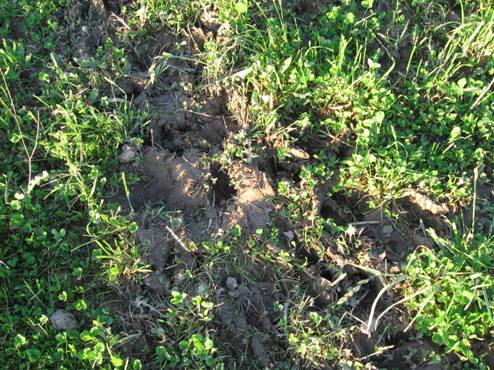How wet are your pastures?
Wet springs can bring grazing challenges and pasture damage.
 Spring of 2011 had brought significant challenges to livestock grazing operations. In many areas, 10 to 12 inches of rain fell from April to May, preventing land from drying out during early spring grazing. Many times when the spring grazing season begins, pastures are soft and wet and this year had been exceptionally wet in many areas. Normal grazing can quickly get these pastures muddy from damage by hoof traffic where livestock hooves are punching through the upper sod layer.
Spring of 2011 had brought significant challenges to livestock grazing operations. In many areas, 10 to 12 inches of rain fell from April to May, preventing land from drying out during early spring grazing. Many times when the spring grazing season begins, pastures are soft and wet and this year had been exceptionally wet in many areas. Normal grazing can quickly get these pastures muddy from damage by hoof traffic where livestock hooves are punching through the upper sod layer.
Photo at right: Severe hoof punching and damage to pasture.
Special grazing techniques are needed to limit damage in soft, muddy paddocks. One way is to graze all your cattle together in one small “sacrifice” paddock until the ground gets solid again. This technique may destroy the area grazed and require reseeding in that individual paddock. This works for 3 to 4 days. If more time is needed, you will need to pull cattle to a sacrifice lot and feed hay until the ground is firm enough to turn back out. This may create some forage maturity challenges that require mechanical harvest. Both options can help protect most of your pasture acres from trampling losses and should be considered when conditions are not improving.
The worst thing you can do is graze a pasture for several days until it’s all torn up and then move to a new area. Repeated trampling over several days greatly weakens plants and can reduce production for months, or even years, due to subsoil compaction. In contrast, pastures muddied up by grazing only briefly usually recover quickly. It may not happen as fast as when the ground is solid, but it will be fast enough to minimize yield or stand loss.
Photo at left: Moderate hoof damage to pasture.
Take advantage of this rapid recovery by moving animals frequently, at least once a day, to a new area. Temporary fencing equipment like poly reels and set-in posts will help increase your grazing flexibility by allowing you to confine or fence cattle away from wet areas. Once the ground firms up, you can return to your normal grazing rotation.
Avoid damaging your forage resources with increased management during these wet conditions. For more information about grazing management to maximize production in your system, contact the MSU Beef Team.



 Print
Print Email
Email




